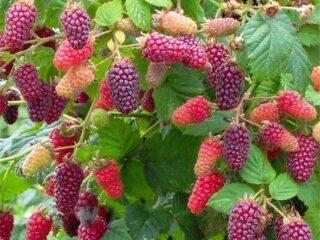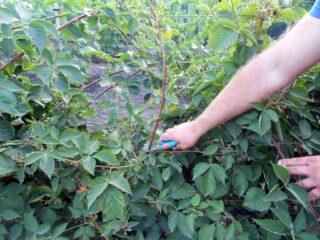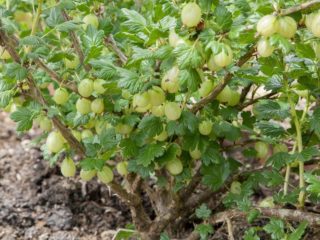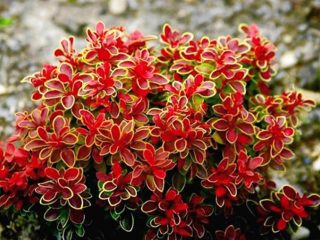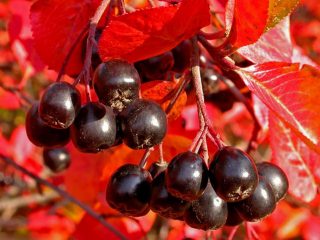Content
Ezhemalina varieties differ in yield, taste, color, berry size. When choosing, it is necessary to take into account winter hardiness: some species tolerate frosts up to -30 degrees well, others require mandatory shelter even in central Russia.
Characteristics of ezhemalina
Ezhemalina is a hybrid obtained from crossing different varieties of raspberries and blackberries. It reaches 3-4 m in height, and the stems often spread along the ground, so they are tied to a trellis. Without a garter, they grow no more than 50-60 cm. Shoots are often covered with thorns, although there are varieties without them.
The plant bears fruit on the shoots of the last year, which must be taken into account when pruning. The berries are quite large, always larger than those of raspberries. The mass reaches from 4 to 14 g, which also depends on the variety. The shape of the fruit is elongated and symmetrical. The color of ezhemalina depends on the variety: it can be red, crimson, but more often blackberry (dark blue, closer to black). On average, one bush gives up to 4–5 kg.
Jemalina berries appear from July to the end of August. The entire crop can be harvested before frost. The taste of the berries resembles both raspberries and blackberries, representing a cross between the two cultures. Sourness is always noticeable, the degree of which depends on the variety and on the growing conditions.
Ezhemalina often produces abundant root growth. It also propagates using root cuttings and tops. At the same time, the shrub is unpretentious: it can be grown in almost all regions of Russia. Standard care - watering, fertilizing, careful pruning, weeding and loosening of the soil.
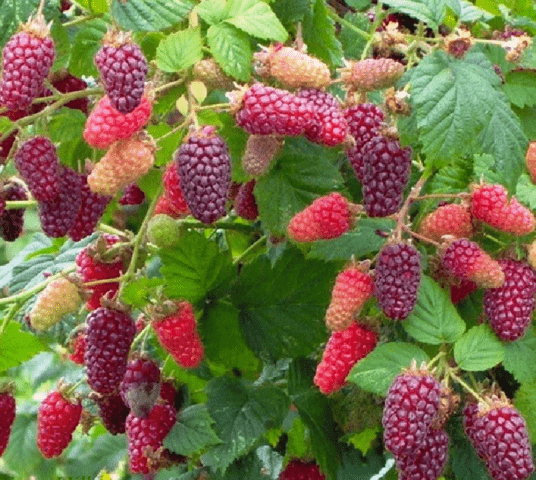
In taste and color, ezhemalina resembles both raspberries and blackberries.
Types of ezhemalina
The culture is a hybrid, therefore, not separate species are distinguished, but only varieties. The most common are:
- Tayberry.
- Loganberry.
- Boysenberry.
Culture can be conditionally divided into two types:
- with spikes;
- without thorns.
Several dozen varieties of this berry are known: they are grown in culture, including in Russia.
The best varieties of ezhemalina
There are different varieties of ezhemalina - with and without thorns, with black or red berries. The best varieties are selected for taste, yield, and winter hardiness. The best varieties include Texas, Cumberland, Merry Berry, and others.
Texas
Texas (Texas) is a tall variety (up to 4 m) with flexible shoots creeping along the ground. Possesses good immunity to diseases and moderate winter hardiness. Gives quite large berries (up to 10 g) with a very pleasant sweet and sour taste, reminiscent of raspberries. At the same time, many thorns are formed on the shoots, which must be taken into account when leaving.
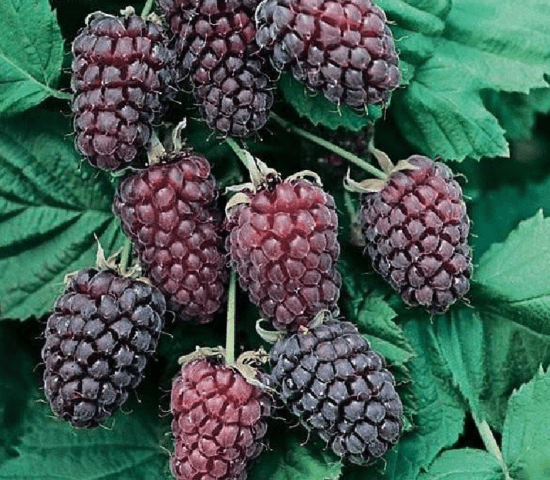
Ezhemalina Texas bears fruit for 15 years, the average yield is 4-5 kg from each specimen
Boysenberry
Boysenberry (Boysenberry) - American hybrid obtained in the 30s of the XX century. Named after breeder R. Boysen. Culture of medium ripening periods: mid-July - early August. Fruiting is not extended, the entire crop can be harvested in 1-2 times. Fruits are dark cherry color, then turn black. The pulp is very juicy and tender, the taste is refined, balanced, with a pleasant berry aroma.
Shoots spread along the ground, grow up to 2-3 m. They need a garter to the trellis and regular pruning.Another feature is that the plant gives a lot of root growth, which must be removed periodically.

Boysenberry shrub yield average: 3-4 kg
Cumberland
Cumberland is a low-growing variety, growing up to 1.5–2 m. Shoots are curved, arched, covered with thorns. Fruits for ezemalina are very small: average weight 2-3 g. At the same time, the yield is moderate and high: 4-6 kg per plant. Fruiting is prolonged, falls on the second half of the summer.
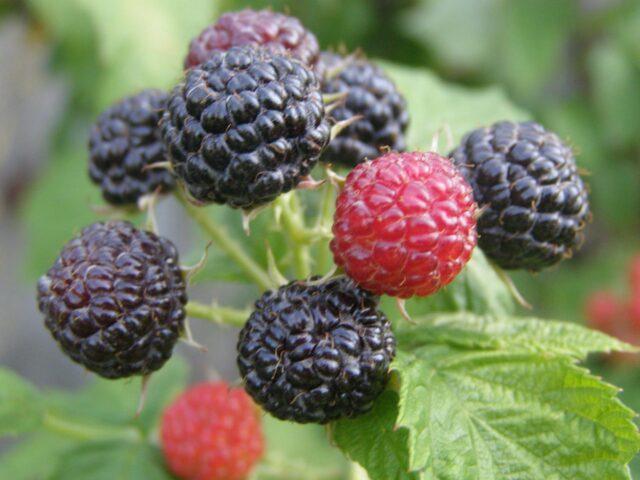
Cumberland produces sweet berries with a subtle blackberry flavor
Merry berry
Merry Berry is a variety of jemaline with excellent blackberry flavor (raspberry notes are not noticeable). On tasting evaluations, its taste is considered to be the standard. The shoots are thorny, so it is not so easy to care for the shrub. Moreover, the berries are not only tasty, but also quite large (weight up to 8 g). Another advantage is early ripening. The yield is moderate, comparable to raspberries: 3-4 kg per bush.

Merry Berry ripens from late June to mid-July
Marionberry
Marionberry is another reference flavor hybrid. Sweet tones and delicate sourness are noticeable, a blackberry aroma is expressed. The berries are medium, weighing about 4–5 g. A vigorous variety, shoots up to 6 m in length, spread along the ground. The branches are covered with thorns.

When grown on an industrial scale, the yield of Marionberry reaches 7.5-10 t / ha
Silvan
Silvan (Silvan) - another creeping variety, covered with thorns. Possesses good resistance to diseases and pests, but needs winter shelter. A variety of early ripening dates - the harvest is harvested from early July to mid-August. Differs in very large berries of a rich burgundy color (weight up to 14 g).
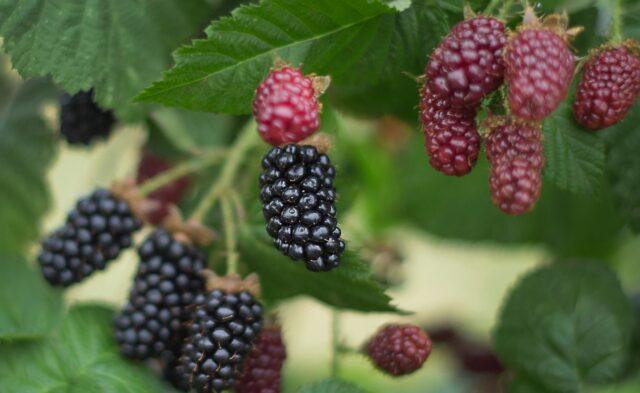
The average yield of the Silvan variety reaches 4-5 kg per bush
Marion
Marion is an American variety that began to be grown in the mid 50s of the last century. A creeping shrub, branches grow up to six meters in length. Covered with small sharp thorns. Berries with dense pulp, black, medium size (weight about 5 g). The taste is reference - sweet, with rich tones of blackberry and raspberry. Fruit aroma is well expressed.
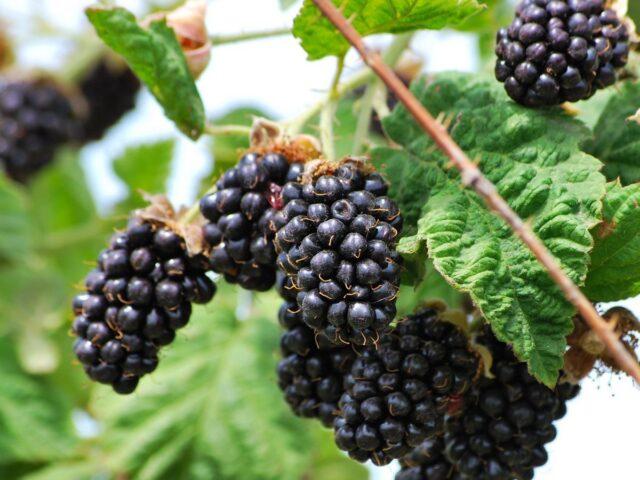
Marion's yield reaches 10 kg per bush
Ezemalina varieties without thorns
Some varieties of ezhemalina are thornless. It is especially convenient for both shrub maintenance and harvesting. The most popular varieties include Buckingham, Loganberry Thornless and Black Satin.
Buckingham
Buckingham - The name of this variety is associated with Buckingham Palace. It was bred in the UK in 1996. Buckingham is close to the Tayberry variety, but gives larger berries up to 8 cm in length, weight up to 15 g). The taste is balanced, sweet and sour, with a pronounced aroma.
The bushes are quite tall, reaching 2–2.5 m. The first fruits give 2-3 years after planting. Berries of this variety, Ezhemalina, ripen from July to mid-August without pronounced waves (extended fruiting).
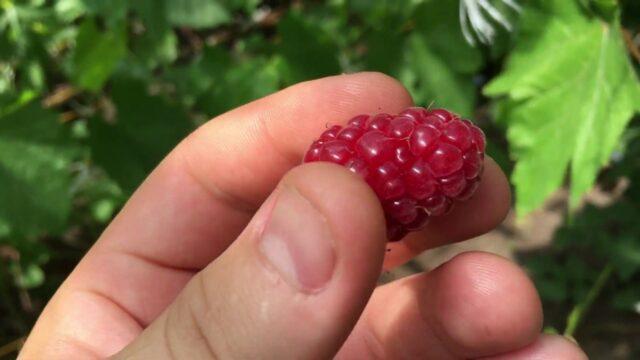
Buckingham produces large, deep red berries
Loganberry Thornless
Loganberry Thornless produces large, conical fruits of pure black color. This is a late variety of Ezhemalina: berries ripen from late August to early October, although flowering occurs, as usual, in June. The taste is very pleasant, somewhat reminiscent of mulberry. The pulp is juicy, sweet, with a rich aroma. The fruits are very large, up to 15 g in weight. At the same time, the bush is decorative, from which you can make an attractive hedge.

Loganberry Thornless berries have a dense skin that allows you to transport crops over long distances
Black Satin
Black Satin is another studless variety with small (4–7 g) black berries. The taste is pleasant, with pronounced sweetness. Ripening later - from mid-August to late September. Bushes are vigorous, reaching 5-7 m in height. Black Satin is a high-yielding variety of ezemalina. Adult plants produce up to 15–20 kg per season. Therefore, the crop is suitable for growing not only in private households, but also for sale.
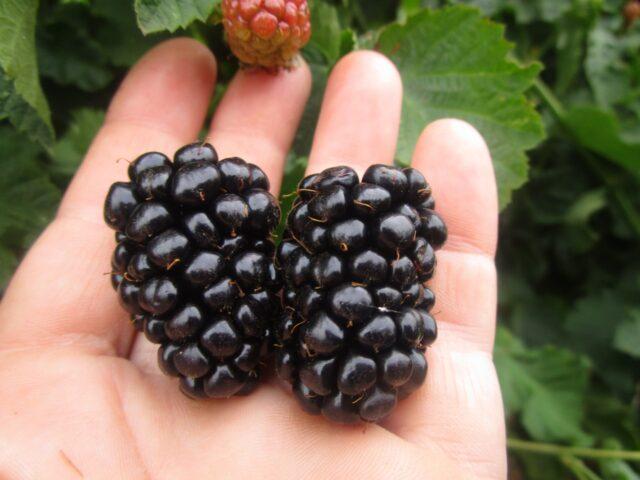
Black satin is one of the most productive species
Ezhemalina garden varieties for the Moscow region and central Russia
When choosing a seedling, it is very important to take into account its winter hardiness. The best varieties of ezhemalina for the Moscow region and other regions of the middle lane are Loganberry, Tayberry and Darrow.
Loganberry
Loganberry produces berries with a pleasant sweet and sour taste. The size of the fruits is medium (up to 5–6 g), the shape is highly elongated, almost cylindrical. Good taste: the pulp is juicy, with sweet and sour notes. Keeping quality and transportability is low, so this species is not suitable for industrial cultivation.
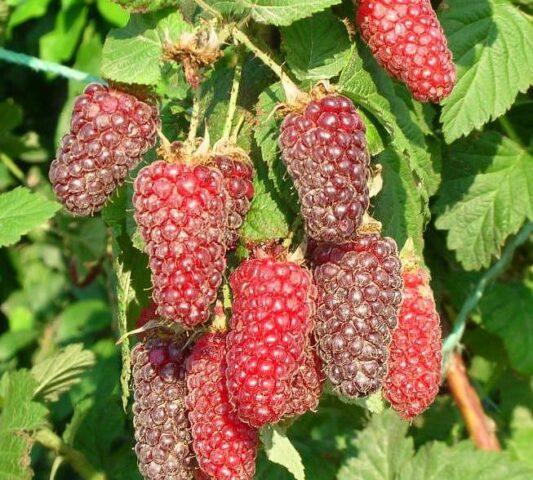
Loganberry gives up to 10 kg per bush
Tayberry
Tayberry is a Scottish hybrid of medium growth, reaching a height of 2 m. The stems are covered with small thorns. Fruits are large - about 10 g. Ripening begins in early July, so Tayberry is classified as an early variety of ezhemalina. Fruiting is uneven, so 4–5 harvests are carried out per season. Moderate frost resistance - the shrub can be grown both in the Moscow region and in neighboring regions.
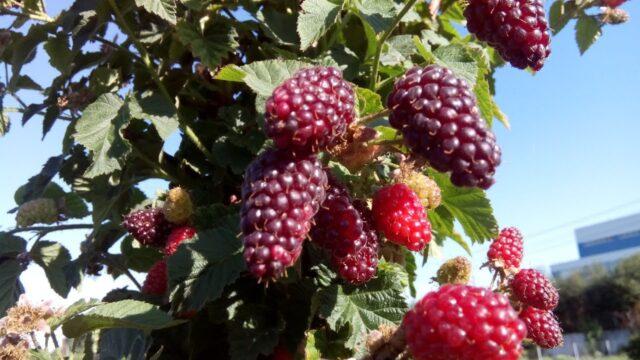
Tayberry yield reaches 3-4 kg per bush
Darrow
Darrow is a productive variety that yields up to 10 kg per bush. Small berries - 3-4 g, with pleasant sweetness and slight sourness in taste. Shoots are straight, up to 3 m in height, while they need a garter. Both the fruits and leaves of the plant are used for food - they are brewed in the form of tea.
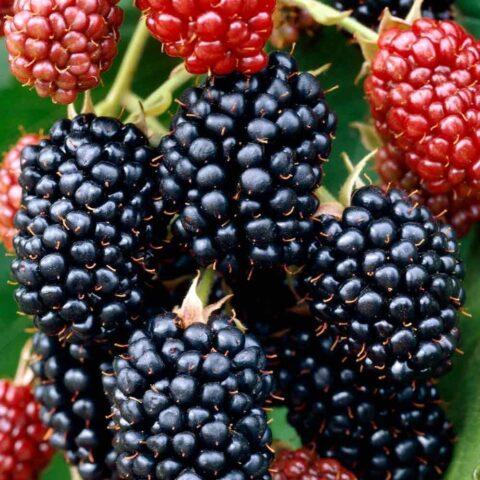
Darrow is one of the most productive specimens
Conclusion
Yezhemalina varieties are suitable for growing in the Moscow region and other regions of the middle lane. Most varieties give a consistently high yield, they are not very demanding to care. Many shrubs are covered with thorns, so you only need to work with them with heavy gloves.
Reviews about the varieties of Yezhemalina
